
Filter News
Area of Research
- Advanced Manufacturing (5)
- Biology and Environment (15)
- Building Technologies (1)
- Computational Biology (1)
- Computational Engineering (1)
- Computer Science (1)
- Energy Science (40)
- Fusion and Fission (2)
- Isotopes (13)
- Materials (7)
- Materials for Computing (8)
- Mathematics (1)
- National Security (1)
- Neutron Science (19)
- Supercomputing (12)
News Topics
- (-) Energy Storage (36)
- (-) Frontier (25)
- (-) Isotopes (29)
- (-) Neutron Science (43)
- (-) Security (11)
- (-) Space Exploration (7)
- 3-D Printing/Advanced Manufacturing (56)
- Advanced Reactors (7)
- Artificial Intelligence (52)
- Big Data (33)
- Bioenergy (29)
- Biology (45)
- Biomedical (23)
- Biotechnology (15)
- Buildings (42)
- Chemical Sciences (37)
- Clean Water (14)
- Composites (17)
- Computer Science (76)
- Coronavirus (10)
- Critical Materials (11)
- Cybersecurity (5)
- Education (2)
- Emergency (3)
- Environment (77)
- Exascale Computing (27)
- Fossil Energy (4)
- Fusion (20)
- Grid (26)
- High-Performance Computing (64)
- Hydropower (1)
- ITER (6)
- Machine Learning (24)
- Materials (56)
- Materials Science (48)
- Mathematics (8)
- Mercury (3)
- Microelectronics (2)
- Microscopy (14)
- Molten Salt (1)
- Nanotechnology (12)
- National Security (41)
- Nuclear Energy (21)
- Partnerships (29)
- Physics (12)
- Polymers (10)
- Quantum Computing (25)
- Quantum Science (34)
- Simulation (24)
- Statistics (4)
- Summit (23)
- Transportation (36)
Media Contacts
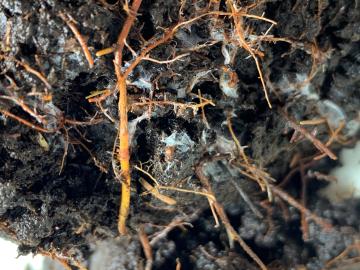
New data hosted by Oak Ridge National Laboratory is helping scientists around the world understand the secret lives of plant roots as well as their impact on the global carbon cycle and climate change.
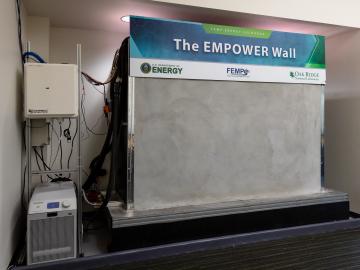
Oak Ridge National Laboratory researchers demonstrated that cooling cost savings could be achieved with a 3D printed concrete smart wall following a three-month field test.
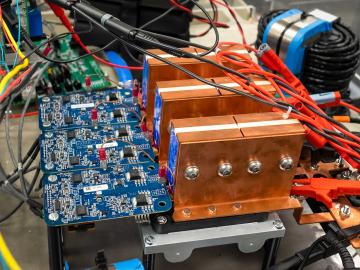
ORNL has licensed its wireless charging technology for electric vehicles to Brooklyn-based HEVO. The system provides the world’s highest power levels in the smallest package and could one day enable electric vehicles to be charged as they are driven at highway speeds.

As a medical isotope, thorium-228 has a lot of potential — and Oak Ridge National Laboratory produces a lot.

As the United States transitions to clean energy, the country has an ambitious goal: cut carbon dioxide emissions in half by the year 2030, if not before. One of the solutions to help meet this challenge is found at ORNL as part of the Better Plants Program.

Researchers at ORNL have developed a robotic disassembly system for spent electric vehicle battery packs to safely and efficiently recycle and reuse critical materials while reducing toxic waste.

A research team at Oak Ridge National Laboratory have 3D printed a thermal protection shield, or TPS, for a capsule that will launch with the Cygnus cargo spacecraft as part of the supply mission to the International Space Station.

Oak Ridge National Laboratory researchers have developed a new catalyst for converting ethanol into C3+ olefins – the chemical
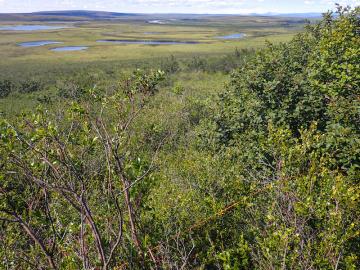
Scientists at Oak Ridge National Laboratory added new plant data to a computer model that simulates Arctic ecosystems, enabling it to better predict how vegetation in rapidly warming northern environments may respond to climate change.
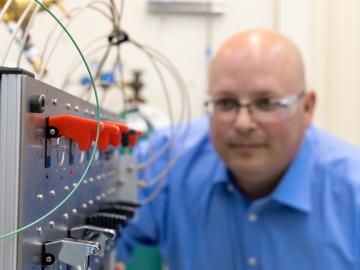
An Oak Ridge National Laboratory researcher has invented a version of an isotope-separating device that can withstand extreme environments, including radiation and chemical solvents.


